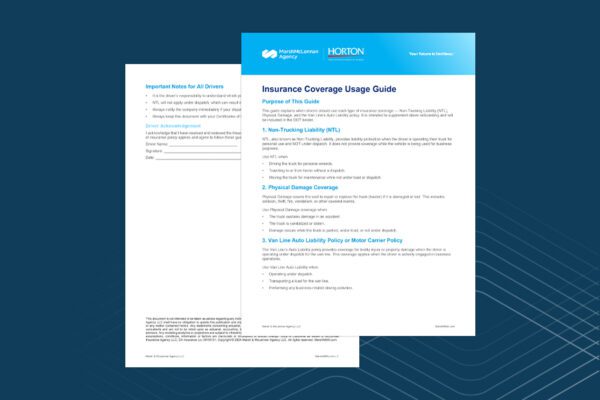Investing in an umbrella insurance policy might not be top-of-mind for nonprofits – but when an emergency strikes, buying this coverage could be one of the best decisions they’ve ever made.
Umbrella liability insurance (also known as excess liability insurance) protects agencies from holes or limits in existing policy coverage, and it also assists with financially draining lawsuits. Just as you carry an umbrella to protect you from a potential downpour, umbrella insurance protects your agency from the types of claims that could close your agency.
This type of coverage provides an extra layer of protection over a nonprofit organization’s employees, clients and volunteers when their standard liability coverage is exhausted. Ultimately, they can help a nonprofit minimize its risk. In the event that someone is injured under their watch and they are found legally responsible, they could be faced with a costly financial burden. Lawsuits can impose multimillion dollar penalties on agencies – far outside the coverage provided by most standard commercial general liability policies. As a result, common losses such as vehicle accidents, employment claims and aligations of abuse can pose a serious financial threat. Without an umbrella liability insurance policy, any expenses beyond the limits of their standard policy are their responsibility.
What is umbrella insurance?
Agencies essentially choose umbrella insurance to back up the limits contained in their underlying liability policies (commercial, general liability, business auto and employer liability). For the most part, it is used to cover exceptionally large events or losses with low probabilities of occurrence. Without umbrella insurance, these events – as few and far between as they may be – would be financially devastating to many companies.
Typically, an umbrella policy serves the following purposes:
- Provides coverage for potential damages and court defense fees that exceed underlying insurance policies.
- Applies to claims where the aggregate limit of the underlying policy has been met. The umbrella policy will cover the portion of the claim that cannot be paid with the underlying policy because there are not enough funds available in the policy to cover the entire claim. For instance, if at the time of a claim, your policy has $500,000 remaining and the claim in question is $1.5 million, then the policy will cover $500,000 and then the umbrella policy will cover the remaining $1 million.
What are the benefits of umbrella insurance for nonprofits?
When we think of nonprofits, we think of the positive impact the organization has on its community. However, we often fail to realize all of the risk nonprofits face on a daily basis – even while completing simple tasks. A volunteer could fall off a ladder while painting a wall. An employee could be driving an agency vehicle to transport clients and get into an accident, resulting in a fatality. These instances might not be covered under other policies but could be covered under an umbrella policy.
Umbrella policies dramatically extend coverage and offer lower costs than primary insurance policies. Because of this, many nonprofits choose to pay the extra premium. The amount of coverage needed will always depend on the total value of your assets.
Here’s how it works: assume a jury ordered your agency to pay $3 million in damages for a liability claim, but your general liability policy has a $2 million limit. Your agency would normally be required to cover the additional $1 million. However, with a $4 million umbrella policy, the $2 million commercial policy would exhaust, and then the umbrella policy would cover the outstanding $1 million.
How much coverage do nonprofits need?
When evaluating your options, it is critical to consider your total assets and your potential for risks. A wide range of factors will determine how much coverage is appropriate for your circumstances. Do your employees operate agency-owned vehicles? Are your employees or volunteers in situations where allegations of abuse and/or neglect are common? These are important points to consider.
How do you select a limit?
Selecting an umbrella limit is an inexact science, as you’re trying to predict the magnitude of an event that may (or may not) happen. There are many considerations nonprofits take while choosing their limits, including but not limited to risk exposure, costs and benchmarking. You can learn more about selecting a limit here.
How can you determine which policy is the best fit for you?
The umbrella market is often erratic. We can find you competitive quotes addressing your specific risk categories. To learn more about umbrella insurance for nonprofits, call a member of The Horton Group’s nonprofit team today.
Material posted on this website is for informational purposes only and does not constitute a legal opinion or medical advice. Contact your legal representative or medical professional for information specific to your legal or medical needs.



